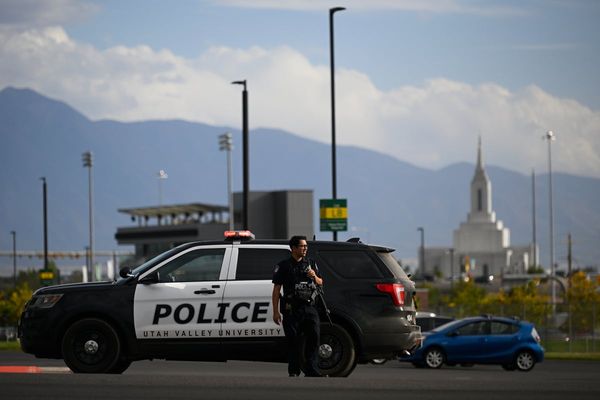In 2022, a Centre for the Study of Developing Societies (CSDS)-Lokniti survey in partnership with the Konrad Adenauer Stiftung showed that TV channels dominate as the news source in India, despite poor trust levels in them. In 2023, a Global Fact 10 research report showed that more and more Indians are now placing their trust in YouTube and WhatsApp for news. Are independent journalists on YouTube slowly replacing TV journalists in India? Ravish Kumar and Kunal Purohit discuss the question in a conversation moderated by Radhika Santhanam. Edited excerpts:
Also read | With several journalists and politicians taking to online platforms, will YouTube become a gamechanger?
To be sure, I am mindful of the fact that there are many good journalists in India, but the scale of those who are not good is huge. People have to go somewhere to get news and analysis. There is no society in the world that I am aware of that can survive without news. So, this is why they go to YouTube. However, it would not be right to say that there is complete trust in YouTube. It is still in the buffering stage: people are trying to figure out where to go to get their news.
On YouTube, too, there are many challenges. Many people speculate and overstep in their analysis, and their language is different. YouTube seems like an alternative journalistic platform but it is in a nascent stage and will take a lot of time to evolve. The reach and scope of TV is much higher. But it’s good that there is a marginal platform which people support.
Also read | Social media influencers are India’s new election campaigners
Kunal Purohit: Since 2014, we have seen two processes happening simultaneously. First, TV media has become more and more pliable to the extent that people looking for critical information are becoming disappointed. Second, there has been a constant de-legitimisation of the media right from the top: the Prime Minister has called us ‘news traders’, his Ministers have called us ‘presstitutes’. This was done to such an extent that people began losing faith in what the news can show us. So, they started looking for sources of information that they could trust. And in their search, they reached YouTube.
Also read | Are social media platforms ready for record elections in 2024?
When I was reporting, Kavi Singh, a 25-year-old singer from Haryana, and her father were shooting for a video and that’s when they realised that Article 370 was abrogated in J&K. They rushed back home and within a few hours, they created a song saying “now that Article 370 is abrogated, you can hear chants of ‘Jai Shri Ram’ in Kashmir”. That was their takeaway. They told me they also feel like they are journalists as they are “setting narratives”. So, the definition of journalism keeps expanding. This is a tricky, dangerous slope to be on. The (right-wing) IT cell operates in unison. That’s how some narratives become dominant.
Misinformation during Indian elections | The saga from 2019 to 2024
Kunal Purohit: I want to add to what Ravish said about disinformation. We need to separate the likes of Ravish from the pro-establishment “news channels”, which are merely an extension of the right-wing IT cell. I analysed some of them for a story. One of the biggest ones is called NMF news. One of its reports said Wayanad has become an ISIS colony and another said Bangladeshis and the Rohingya have infiltrated Jharkhand and are converting the tribal people by marrying them. This is a clever way of doing propaganda, where you’re officially doing news but you’re actually just trumpeting what the propaganda channels are telling you to do.
How do you deal with this? There are many cases where the government is going after independent news channels on YouTube, as Ravish said, but what they are not doing as much is going after the likes of NMF News.
From IT bots to AI deepfakes | The evolution of election-related misinformation in India
Some independent journalists on YouTube say they have no idea why their views have suddenly dropped. YouTube has pulled down some channels without really explaining why, so there is also lack of transparency, and there is arbitrariness. The government with the Bill has made its intention clear. It wouldn’t have bothered to look at regulating YouTube if it didn’t think YouTube was damaging it enough.
Ravish Kumar: The Prime Minister addressed about 5,000 content creators recently. Second, Kunal spoke of how the right-wing supports some YouTubers. The best example of that is the YouTuber Manish Kashyap. He spread fake news on Tamil Nadu, got arrested, and has now joined the BJP. So, social media has come a breeding ground for future leaders of the party. And these people eat into the share of those who have done hard work for the party on the ground.
Kunal Purohit: Yes, the fact that the Prime Minister interacts with YouTubers and awards them tells you how highly the establishment thinks of YouTube as a medium for setting the narrative.
Listen to The Hindu Parley podcast here
Ravish Kumar, a senior journalist, was formerly with NDTV. A Ramon Magsaysay award winner, he now runs a YouTube news channel with more than 10 million subscribers; Kunal Purohit is an independent journalist and researcher, and the author of H Pop: The Secretive World of Hindutva Popstars









